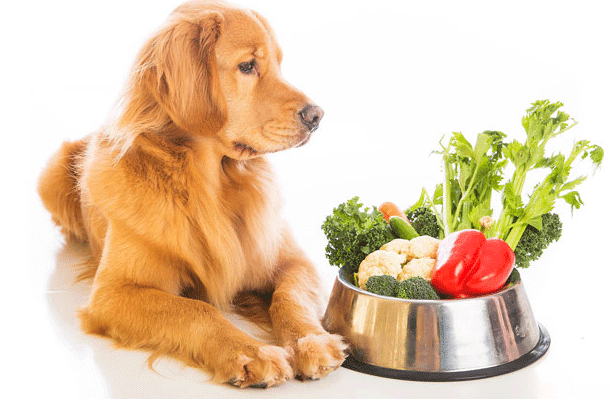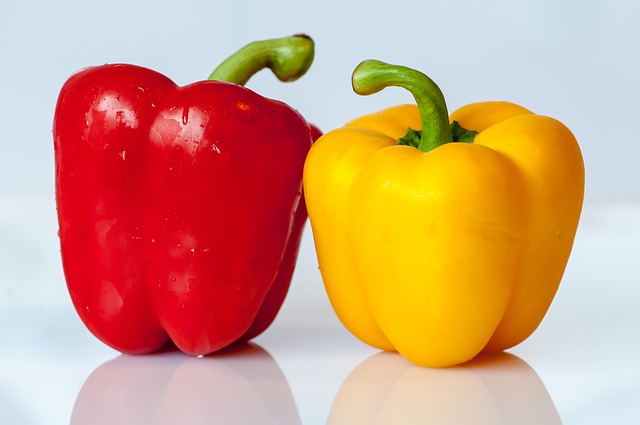Can Dogs Eat Peppers? Is Peppers Safe For Dogs?
 |
| Can Dogs Eat Peppers? Is Peppers Safe For Dogs? |
Can Dogs Eat Peppers
For pet owners, it can be difficult to know which foods are harmful to dogs. For example, can dogs eat peppers? In this case, the answer is yes. Peppers have punch in nutritional value for you and your four-legged friend. "They are non-toxic and they are a healthy alternative snack to share with your dog," says Dr. Carly Fox, a staff physician at Animal Medical Center in New York.
Red, Green, Yellow, Orange - Is Color Important?
Any colored pepper contains the essential vitamins and nutrients that are good for a dog's health, although the red type is the most nutritious. "Red peppers are the best at feeding your dog because they contain the greatest amounts of vitamins and antioxidants," says Bella Frakes, dog trainer and breeder with Mikotusar Kennels and Aviary in Dallas, Texas.
What Is The Health Benefits?
 |
| Can Dogs Eat Peppers? Is Peppers Safe For Dogs? |
Peppers are rich in vitamins A, E, B6, and lutein and are excellent sources of vitamin C and beta-carotene, which are important antioxidants for a dog's healthy immune system, according to Leasa Moltke, a nutritionist for a pet-friendly holistic brand for solid pet gold pet. "Beta-carotene can be turned into vitamin A in the body and is important for the health of skin, coat and eyes," she says.
How Many Peppers Are Safe For Your Dog To Eat?
As with any human food that you add to your dog's diet, peppers should be introduced slowly and sparingly to see how it responds. "Some dogs will agree with that, and some will not," says Dr. Fox. She recommends that large dogs eat less than half a pepper and that small dogs eat less than a quarter of pepper at a time. Consider removing seeds and stems to prevent indigestion.
If you feed your dog portions beyond these amounts, it could end up with stomach upset, vomiting and/or diarrhea. "As with any other vegetable intake, you should be careful not to overload your pet, as gastrointestinal disorders can occur," says Dr. Danel Grimmett, veterinarian of Sunset Veterinary Clinic in Edmond, Okla.
How Should They Be Prepared?
 |
| Can Dogs Eat Peppers? Is Peppers Safe For Dogs? |
According to Dr. Fox, you should never add seasoning or salt to peppers or feed those of your dog that have been mixed with onions or garlic because these ingredients are toxic to dogs. It is also important to note that you should never give your puppy spicy varieties, such as jalapeños or hot peppers.
The outer skin of a pepper can be hard and difficult to chew, so you can stream or mash the pepper for easier consumption and digestion of your dog. Remember to always consult your veterinarian before introducing anything new to your dog's diet.
Are Peppers Safe To Feed My Dog?
Rest assured that, yes, peppers are safe and can be nutritious for your dog. As for the other peppers, however, the safety stops roughly with the variety of bells. They are, by far, the variety of pepper that contains the least spice.
Other peppers, such as jalapeños, serranos, etc., can be incredibly spicy. This variance in spices is because all peppers while belonging to the same genus of Capsicum, contain varying amounts of capsaicin. Capsaicin is an organic compound and an active component of peppers. It is an irritant to all mammals and can cause a burning sensation on all tissues with which they come in contact, including skin, eyes, and lips. The more capsaicin in a single pepper, the stronger the irritant and the stronger the burning sensation.
Peppers have a fairly insignificant level of capsaicin in them. As such, they are among the most bland peppers of the genus Capsicum. This makes it the most ideal pepper to feed your dog.
Warning
Other peppers that contain higher concentrations of capsaicin are not as safe and can cause stomach upset and high concentrations can cause burns, mouth irritation and other side effects.
What Is The Health Benefits Of Peppers?
 |
| Can Dogs Eat Peppers? Is Peppers Safe For Dogs? |
Peppers are rich in vitamin A, vitamin E, vitamin B6, vitamin C, vitamin K, carotenoids such as lutein, capsanthin, beta-carotene, flavonoids like quercetin and luteolin, as well as other compounds such as potassium and folate. Vitamin A, lutein and other carotenoids are good for eye health and vitamin C helps support a healthy immune system. However, unlike people, dogs can make their own vitamin C, so no supplementation is necessary. Vitamin E contributes to the health of your dog's skin and coat, and vitamin B6 helps maintain a healthy nervous system. Some studies have also found a link between beta-carotene and arthritis, which could be a potential application for elderly dog care. All this packed in a pepper.
Balanced and commercially available dog foods already contain appropriate levels of these vitamins and minerals. Giving small amounts of peppers to a dog with a whitened diet is safe but will probably not provide any additional health benefits. If you cook at home for your dog, peppers may be nutritionally beneficial, but you should consult a veterinary nutritionist to ensure that your pet's nutrition is nutritionally balanced.
Anyone who has already shopped in a grocery store will know that peppers are different colors. So what is the pepper color you choose? Red peppers can contain the highest concentrations of vitamin C and vitamin A as well as beta-carotene, while green, orange and yellow peppers are all great options, red peppers have the most punch.
How Many Peppers Can I Feed My Dog?
As with any new food, it is essential to start small and in moderation to see how your dog will react. Some dogs will go well with peppers added to their daily diet and some will not be as tolerable. Always be sure to completely remove any seeds, stems and inner core that may be more difficult to digest.
In general, dogs should not receive more than 10 percent of their daily calories from foods other than their nutritionally balanced dog food. Higher amounts can lead to imbalances of vitamins and minerals.
The outer part of pepper skin can be difficult to chew and/or digest for your dog when pepper is still raw. However, you can steam the pepper to soften the skin.
Never season peppers with salt, spices or garlic, and never use peppers that have been cooked or mixed with onions (so these bags of frozen and pre-cut peppers and onions are not an option for Fido).
As mentioned before, although your palate can handle more spicy peppers, most dogs can not handle as much spice. Their digestive tract may not be as used to something like a jalapeño or Serrano as yours. So while slipping a chili on your dog is not necessarily a deadly mistake, it can cause stomach upset, leading to indigestion and diarrhea. And as with any new treatment, always consult your veterinarian before familiarizing yourself with your dog's diet.
Are Green Peppers Safe For Dogs?
Green peppers are a crunchy treat that is safe for your dog in moderation. Despite being a vegetable, they are a fantastic source of vitamin C to help improve the function of the immune system. Like carrots, they are naturally rich in beta-carotene, which helps prevent certain types of cancer.
Beta-carotene also helps protect eyesight by reducing cataracts and other age-related eye problems. Various studies have also found a link between beta-carotene and arthritis, reinforcing the idea that beta-carotene is excellent for older dogs.
Can Dogs Eat Yellow Peppers?
 |
| Can Dogs Eat Peppers? Is Peppers Safe For Dogs? |
When it comes to yellow peppers for dogs or any other color bell pepper, you can give them raw or you can cook them. Feeding your dog excessive raw bell pepper can cause diarrhea and vomiting. Bell peppers are rich in fiber, folate, beta-carotene, manganeses, phosphorus and essential vitamins A, B, C, E, and K. Your dog can eat capsicum in raw form. You can also cook the bell peppers or crush them using a blender or food processor. Through this, your dog can digest it better.
What Happens If Your Dog Eats Too Much Peppers?
Dogs are carnivores, so too many vegetables will almost always disturb their stomachs. If your dog eats a lot of green peppers, he will have diarrhea and possibly vomiting. Their stomachs could swell a little and they could end up with gas.
The first time they eat peppers, make sure to feed only a small amount to see how they react. If their initial taste causes some sort of digestive upset, stop feeding the peppers and stick to their normal diet.
Green peppers are a portion of human food that can be safely consumed by dogs as long as they do not consume too much. If you choose to give your dog peppers, keep the amount to a minimum to keep his body happy and nutritionally balanced.
Related Post :
Can Dogs Eat Carrot?
Can Dogs Eat Mint?
Can Dogs Eat Raw Meat?

Comments
Post a Comment